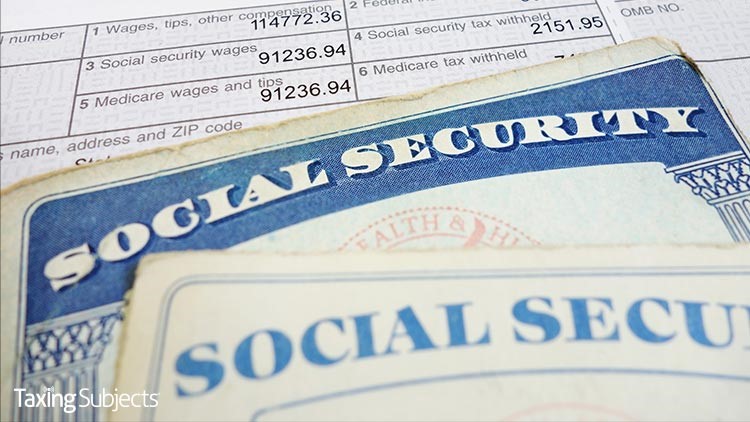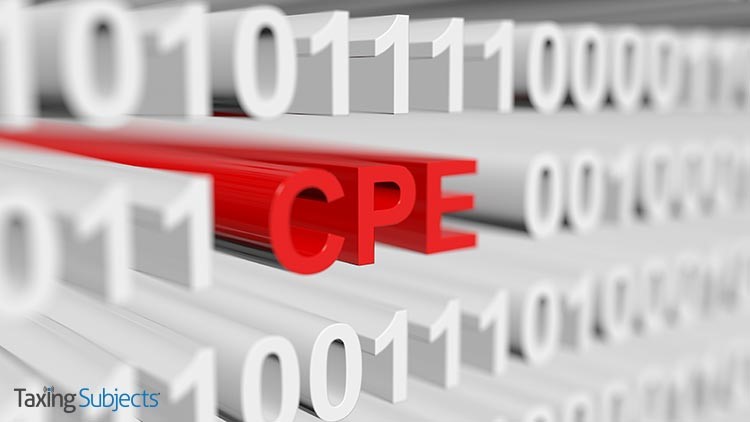by | Apr 3, 2020 | Tax Tips and News
The coronavirus pandemic has pushed the IRS to order its workforce to work from home. The IRS issued an email announcing the shift, and Accounting Today magazine obtained a copy of the email.
“As a result of recent OPM [U.S. Office of Personnel Management] guidance, starting Monday, March 30, 2020, the IRS is directing all employees, including employees who are currently not teleworking but whose work is portable or can be adapted to work off-site, to evacuate the work site and work from home (or an alternate location)—including employees who are not currently on a telework agreement,” said the memo. “All employees affected by this directive must take their equipment home to be prepared to work from home.”
The email directed workers to a chart that shows just which employees were expected to leave the premises and gave information to managers to better answer employee questions.
The memo also makes it clear that sick employees should not come in to the office, citing concerns for their own safety—and the safety of others.
The move to evacuate is no surprise to the union that represents IRS workers. Accounting Today reports the National Treasury Employees Union previously urged all federal agencies to close buildings housing 50 or more employees.
Latest in a Series of Steps
The IRS just recently closed its Practitioner Priority Service, which services the needs of tax professionals. The IRS website also said some other operations are being curtailed during the virus onslaught, but the agency is continuing to accept tax returns and send out refunds, both activities deemed mission-critical by the IRS.
The work-at-home order may have implications for the IRS’ latest project: sending out the stimulus payments that were approved by Congress to taxpayers. Those millions of checks and direct deposits are expected to be sent out in the next few weeks. The IRS cautions, though, checks sent through the mail will take longer to process.
– Story provided by TaxingSubjects.com
by | Apr 3, 2020 | Tax Tips and News
Economic Impact Payments are automatic for retirees.
The Treasury Department recently dispelled some uncertainty regarding how it would handle economic impact payments for Americans on Social Security. According to the press release, those who rely on Social Security payments will simply receive stimulus money via direct deposit.
Treasury is instructing the IRS to use Forms SSA-1099 and RRB-1099 to direct payments to those who don’t regularly file tax returns. Treasury Secretary Steven Mnuchin explained the rationale for the update: “We want to ensure that our senior citizens, individuals with disabilities, and low-income Americans receive Economic Impact Payments quickly and without undue burden.”
The clarification comes days after initial guidance recommended that those who don’t normally file tax returns “file a simple tax return to receive an economic impact payment,” specifically listing Social Security recipients alongside “low-income taxpayers, senior citizens, … [and] some veterans and individuals with disabilities.”
Some of the confusion seems to have arisen from the method used to determine economic impact payment eligibility: the income claimed in a recent tax return. Since these payments have a phase-out threshold, tax returns are being used to determine how much stimulus money—if any—taxpayers will receive. Now, Social Security recipients will automatically get their $1,200 payment.
Guidance isn’t yet clear as to what steps should be taken by low-income taxpayers who don’t receive Social Security benefits and aren’t required to file a tax return. Be sure to check the Taxing Subjects blog for other tax updates!
Source: “Social Security Recipients Will Automatically Receive Economic Impact Payments”
– Story provided by TaxingSubjects.com
by | Apr 2, 2020 | Tax Tips and News
COVID-19 could affect CPE reporting deadlines.
The National Association of State Boards of Accountancy (NASBA) on Tuesday announced that it was recommending state boards of accountancy across the country extend their CPE-completion deadlines to accommodate accountants affected by COVID-19 disruptions. This development comes on the heels of federal, state, and local governments implementing a number of public safety measures designed to reduce the spread of the coronavirus.
NASBA recommended extending current CPE deadlines to October 31, 2020. “If a CPA’s reporting period ended on March 31, 2020, the licensee would have until October 31, 2020, to complete the CPE requirements for that reporting period,” NASBA explained. “Similarly, if a CPA’s reporting period ended on June 30, 2020, the licensee would have until October 31, 2020, to complete the required CPE.”
As an advocacy and advisory group for state boards of accountancy, NASBA notes in the press release that it does not hold regulatory authority over those bodies. While individual boards of accountancy will make their own determinations concerning CPE deadlines for current and pending licensees, NASBA committed to cataloguing which states extend their CPE deadlines.
In the announcement, NASBA noted that their office—located in Nashville, TN—has already transitioned to remote work, underscoring the challenges faced by businesses across the country.
Source: “CPE Reporting Grace Period Due to COVID-19 – NASBA Recommendations”
– Story provided by TaxingSubjects.com
by | Apr 1, 2020 | Tax Tips and News
COVID-19 has disrupted life for Americans across the country, and as we’ve seen in recent weeks, the tax industry is not immune to change. To limit the number of physical documents handled by IRS employees, the IRS announced that it has adjusted its policy regarding tax signatures for this unprecedented filing season.
“We are implementing a temporary deviation that allows IRS employees to accept images of signatures (scanned or photographed) and digital signatures on documents related to the determination or collection of tax liability,” the IRS explained in the memorandum to tax industry partners. “We are also implementing a temporary deviation that allows IRS employees to accept documents via email and to transmit documents to taxpayers using SecureZip or other established secured messaging systems, [like e-Fax].”
Prior to publishing the memo, the IRS typically accepted electronic signatures for a variety of tax forms—the most notable and common being the Form 1040. This announcement specifically pertains to documents that typically require a physically printed and signed form:
- Extensions of statute of limitations on assessment or collection
- Waivers of statutory notices of deficiency and consents to assessment
- Agreements to specific tax matters or tax liabilities (closing agreements)
- Case specific Power of Attorney
The IRS noted that tax professionals and taxpayers who need to confirm whether a specific form will be accepted digitally should contact the Business Operating Division. Those who need to submit a signed tax document to the IRS via email will need to use one of the approved file types outlined in the memo: .tiff, .jpg (.jpeg), .pdf, and .zip. The IRS also said encrypted files and files created by Microsoft Office Suite will be accepted.
While this is the latest COVID-19 motivated change in IRS protocols, it might not be the last. Remember to check Taxing Subjects regularly for future tax industry updates.
Source: IRS Memorandum
– Story provided by TaxingSubjects.com
by | Apr 1, 2020 | Tax Tips and News
Distribution of the federal government’s economic impact payments, meant to counter the economic effects of the coronavirus pandemic in the U.S., is scheduled to start in the coming weeks, according to the U.S. Treasury Department. No action is required on the part of most taxpayers.
However, some seniors and others who normally don’t file a return will need to submit a simple tax return to receive a stimulus payment.
There are a few things the Treasury Department and the IRS want taxpayers to know about the payments and the process to distribute them.
Who is Eligible?
Taxpayers with adjusted gross income (AGI) of up to $75,000 for individuals and $150,000 for married couples filing jointly will get the full amount. Above the stated limits, the payment is reduced by $5 for each $100 above the $75,000 or $150,000 thresholds.
Single filers with income above $99,000 and joint filers making more than $198,000 with no children are not eligible.
Eligible taxpayers who filed tax returns for 2019 or 2018 will automatically receive a payment of up to $1,200 for individuals or $2,400 for married couples. Parents will also get $500 for each qualifying child.
How Will the IRS Know Where to Send It?
The IRS says the “vast majority” of taxpayers don’t have to take any action. The IRS will automatically calculate and send the payments to eligible taxpayers.
For those who’ve already filed their 2019 tax returns, the IRS will use this most recent information to figure the payment amount. If taxpayers have not yet file their return for 2019, their 2018 tax return will be used to calculate the payment.
The economic impact payment will be deposited directly into the same banking account used on the return that was filed.
If the IRS Doesn’t Have Your Direct Deposit Information
Treasury plans to develop a web-based portal for individuals to provide their banking information to the IRS online, so that taxpayers can get payments immediately, as opposed to waiting for a check in the mail.
Not Required to File a Tax Return?
People who typically don’t file a tax return will need to file a simple return to receive an economic impact payment. Low-income taxpayers, senior citizens, Social Security recipients, some veterans and taxpayers with disabilities who are otherwise not required to file will not owe tax.
How to File the Necessary Return
The IRS will soon provide instructions on IRS.gov/coronavirus on how to file a 2019 tax return with simple—but necessary—information, including their filing status, number of dependents and direct deposit bank account information.
Didn’t File in 2018 or 2019?
You can still receive a payment. The IRS urges anyone with a tax-filing obligation who hasn’t yet filed a return for 2018 or 2019 to do so as soon as they can in order to receive a stimulus payment. Taxpayers should include direct deposit banking information on the return.
How Long are the Payments Available?
For those concerned about visiting a tax professional or otherwise getting help to file with a tax return, the economic impact payments will be available throughout the rest of 2020.
Need More Information?
The IRS will post all key information on IRS.gov/coronavirus as soon as it becomes available.
Keep in mind, the IRS has a reduced staff in many of its offices but remains committed to helping eligible taxpayers receive their payments in a quick and efficient manner. Check for updated information on IRS.gov/coronavirus instead of calling the IRS help line, where operators are trying to help taxpayers file their 2019 returns.
– Story provided by TaxingSubjects.com





